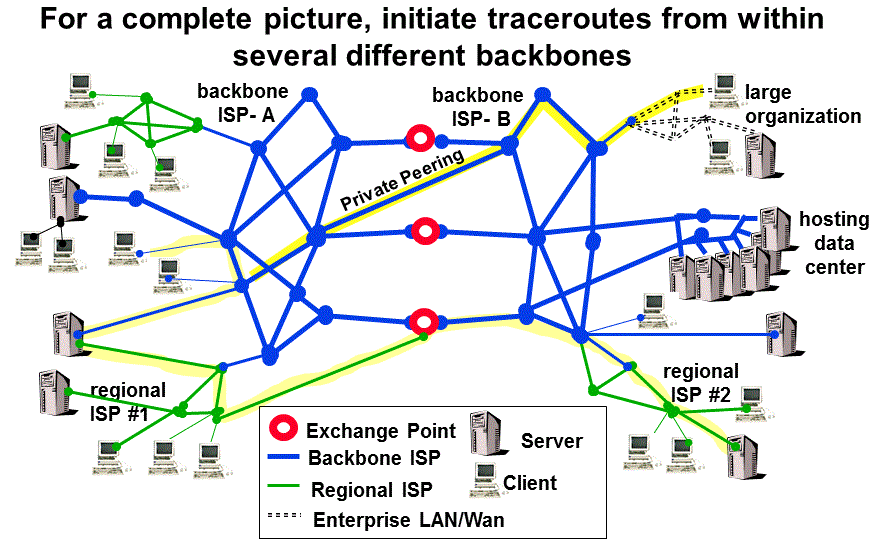The Internet's Physical Layer |
The Internet's Physical Layer |
 |
There are thousands of Internet Service Providers that provide access to individuals and companies. Out of these many thousands of ISP's, there are only a handful which operate extensive high-speed backbone networks. Most other ISP's derive their connectivity from the larger ISP's. Russ Haynal's ISP Page lists the major ISP's
Many ISP's interconnect with each other at Exchange Points (EPs) It is at the EP's that the end-user traffic from ISP#1 can transfer over to ISP#2 to reach a host computer/network which happens to be connected to ISP#2. EP.net has a long list of Exchange Points from around the world. Examining the list of ISP's connected at each EP, will help indicate which ISP's are the major providers.
Most recently, the top ISP's (UUNET, SPRINT, Cable & Wireless, etc.) have begun to increase the amount of "private peering" they do between themselves and a few of the other ISP's. These providers have several connections dedicated to inter-connecting their backbones without going through the EP's.
If you are interested in even more details about how the Internet operates, explore:
Routing Details:

Finally, some interesting trivia for those of you who are wondering just how large the Internet can become. The next generation of IP address space (IPV6) will be 128 bits long. This results in an address space size of: 340,282,366,920,938,463,463,374,607,431,768,211,456 . Depending on the overhead for this addressing architecture, In will provide anywhere from 1,564 to 3,911,873,538,269,506,102 addresses for every square meter of the Earth's surface area.
|
|
Contact me at 703-729-1757 or Russ
'at' navigators.com
If you use email, put "internet training" in the subject of the
email.
Copyright © Information Navigators